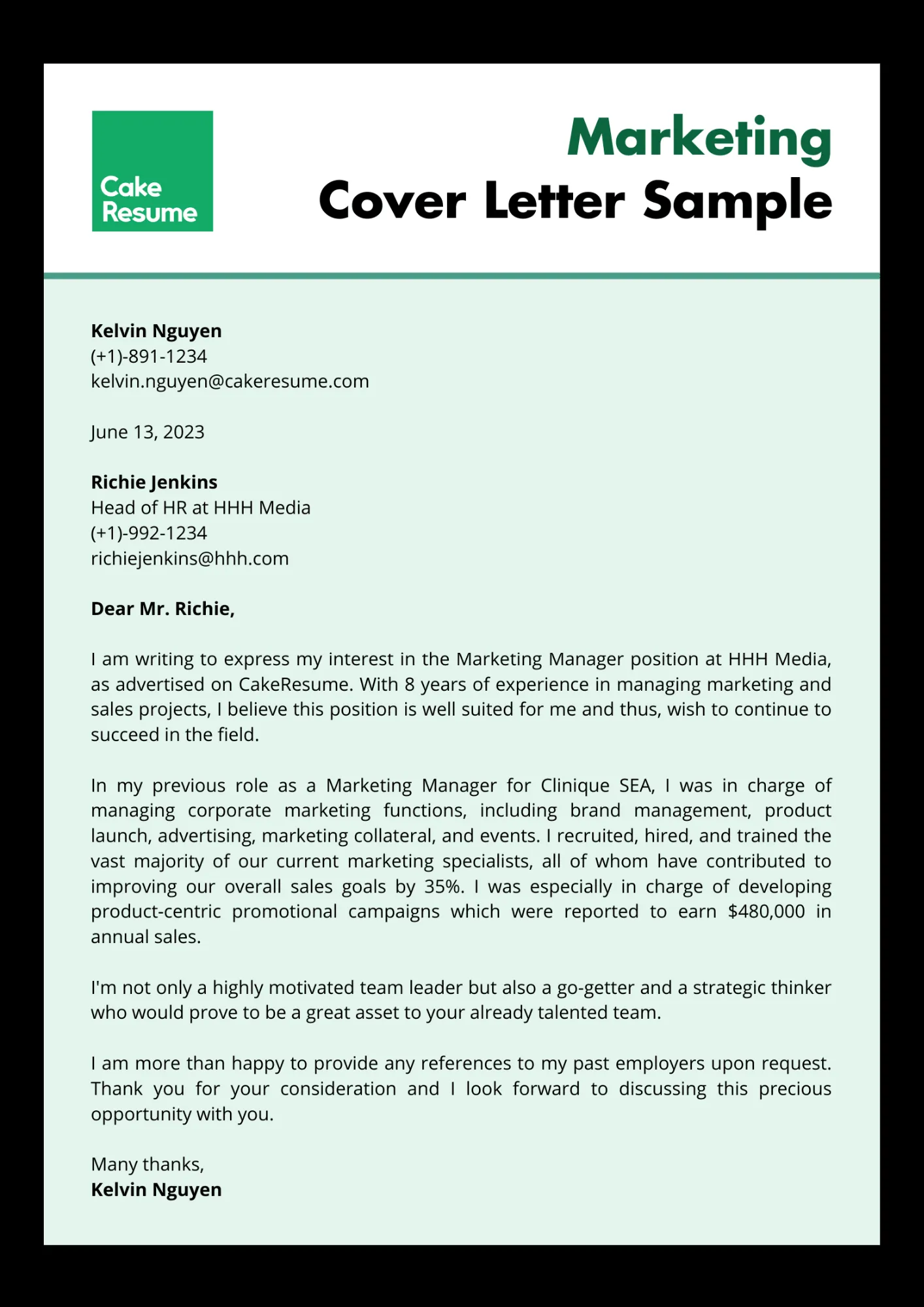What is a Marketing Cover Letter?
A marketing cover letter is a crucial document that accompanies your resume when applying for marketing positions. It serves as your introduction, allowing you to highlight your skills, experience, and enthusiasm for the role and the company. Unlike a resume, which provides a summary of your qualifications, a cover letter gives you the opportunity to tell a story, connecting your experiences to the specific requirements of the job. It’s your chance to showcase your personality, demonstrate your understanding of marketing principles, and make a memorable impression on the hiring manager. Think of it as your personal marketing campaign aimed at securing an interview.
Why is a Cover Letter Important for Entry-Level Marketing?
For entry-level marketing roles, a cover letter is exceptionally important. Because you may have limited professional experience, the cover letter allows you to emphasize relevant skills gained through internships, academic projects, volunteer work, or personal endeavors. It’s your chance to demonstrate your passion for marketing and your potential to succeed in the role. It provides context to your resume, explaining how your experiences, even if not directly marketing-related, have equipped you with the skills and knowledge necessary to excel. A well-crafted cover letter can be the deciding factor, especially when competing against candidates with similar academic backgrounds but potentially less experience.
Key Components of an Effective Marketing Cover Letter
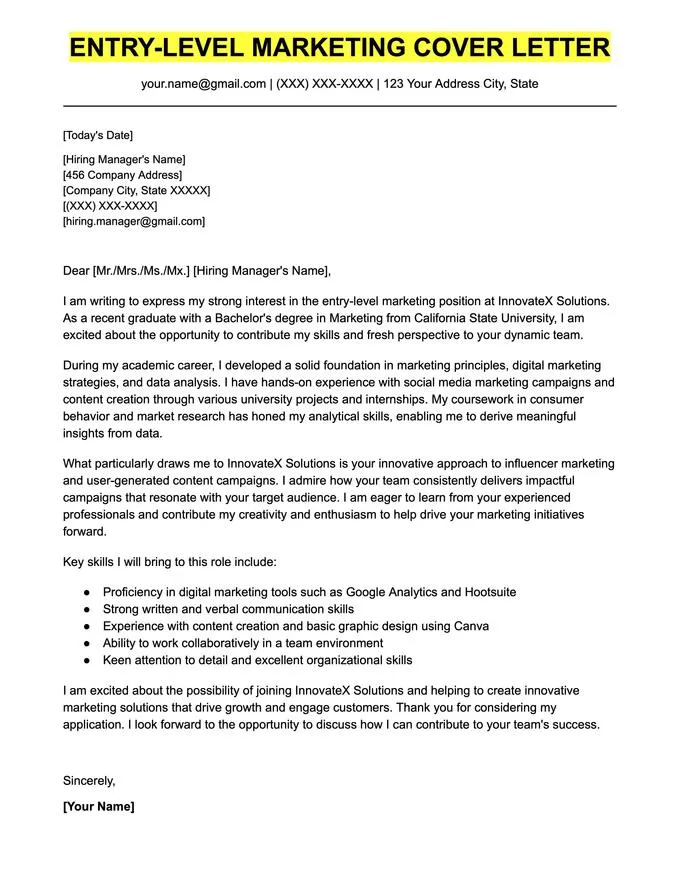
A successful marketing cover letter includes several key components. These components work together to create a compelling narrative that convinces the hiring manager of your suitability for the role. Each section plays a specific role in conveying your skills, enthusiasm, and understanding of the job requirements. A cover letter should be well-structured, easy to read, and tailored to the specific job and company. Remember to always proofread your cover letter to eliminate any errors in grammar, spelling, or punctuation. Consider it as a sample of your communication abilities, which is a vital skill in the marketing field.
Your Contact Information and Date
Start with your full name, address, phone number, and email address. Include the date below this information. Make sure your email address is professional. This section ensures the hiring manager can easily contact you if they wish to schedule an interview. The date is included to show when the letter was written and submitted, which can be useful for tracking the application process and helps the hiring team to organize applications chronologically. Ensure that all your contact details are accurate and up-to-date to avoid any communication issues.
The Recruiter’s Contact Information
If possible, address your cover letter to a specific person. Research the hiring manager’s name and title through LinkedIn or the company website. If you cannot find a specific name, use a professional greeting such as ‘Dear Hiring Manager’. This personal touch demonstrates your initiative and attention to detail. Include the recipient’s title, the company name, and the company’s address. This shows that you’ve taken the time to research the company and the role. Using a specific name also makes your application more personal, making it less likely to be overlooked.
A Compelling Opening Paragraph
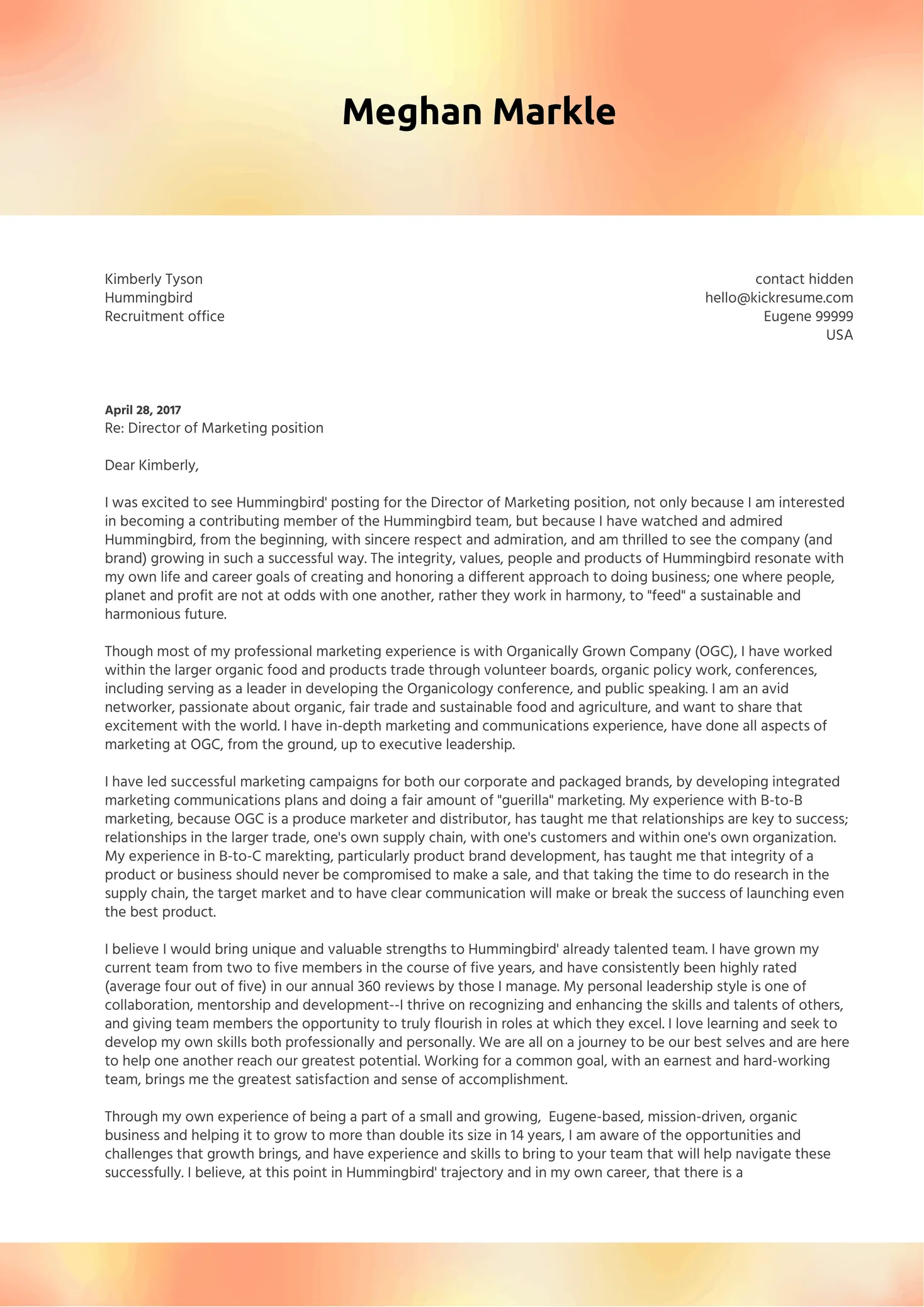
The opening paragraph is your first chance to grab the reader’s attention. State the position you are applying for and how you learned about it (e.g., job board, company website). Briefly mention why you are interested in the role and the company, showcasing your enthusiasm. Highlight a key skill or achievement that aligns with the job requirements to immediately capture the hiring manager’s interest. This paragraph should be concise, engaging, and set the tone for the rest of your cover letter. It is important to show that you’ve researched the company and understand its values and goals, aligning your aspirations with their mission.
Highlighting Your Skills and Experience
This is where you connect your skills and experience to the job requirements. Use the job description to identify the key skills and qualifications the employer is seeking. Provide specific examples from your past experiences, such as internships, projects, or coursework, to demonstrate those skills. Quantify your achievements whenever possible. Even if your experience is limited, you can still showcase transferable skills like communication, problem-solving, and teamwork. This section should be focused, providing concrete evidence that you possess the necessary abilities to excel in the role. Tailor your examples to match the specific requirements outlined in the job posting.
Showcasing Relevant Marketing Skills
Specifically highlight marketing-related skills such as content creation, social media management, SEO, email marketing, market research, and data analysis. Provide concrete examples of how you’ve utilized these skills. For example, if you managed social media for a student organization, describe how you increased engagement or grew the follower base. If you conducted market research for a class project, explain your methodology and the insights you gained. Tailor your skills to match the requirements of the role. Employers often value practical experience and the ability to apply marketing concepts in real-world scenarios. Emphasize any certifications or courses you have completed that align with marketing best practices.
Demonstrating Your Understanding of Marketing Principles
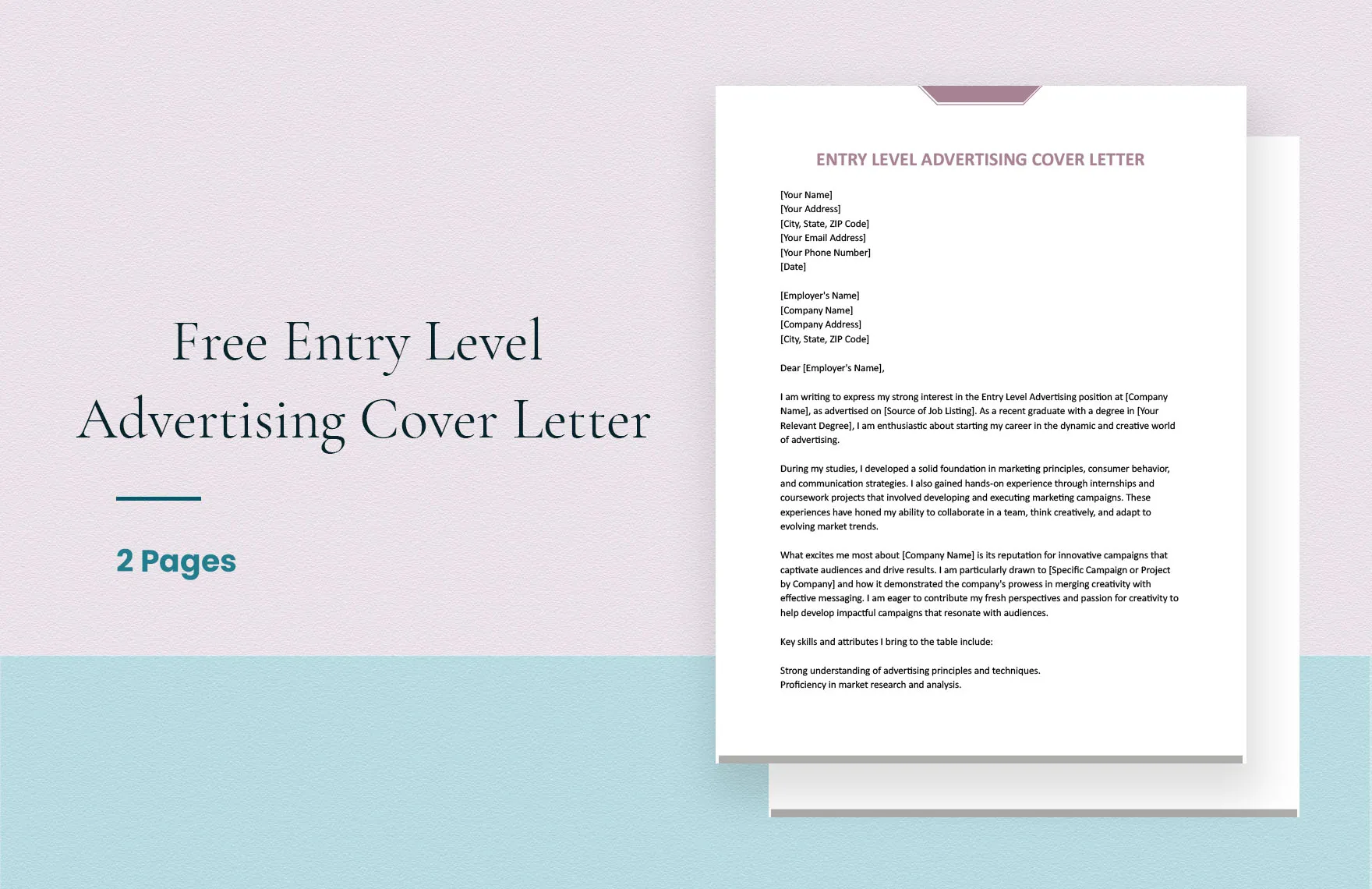
Show that you understand fundamental marketing principles such as the marketing mix (4Ps), target audience segmentation, and brand positioning. Demonstrate your understanding of the company’s brand, mission, and target market. Relate your skills and experiences to these principles. For example, explain how your content creation skills align with the company’s brand voice. Use industry-specific language to show you are familiar with marketing concepts. If you’ve developed marketing plans or strategies, briefly describe them and how they align with the job requirements. Showing you understand the bigger picture is important.
Quantifying Your Achievements (Even with Limited Experience)
Even if you lack extensive professional experience, you can still quantify your achievements. Use numbers to demonstrate the impact of your work. For example, if you improved website traffic, mention the percentage increase. If you managed a social media campaign, state the growth in followers or engagement rate. If you were involved in a successful project, provide specific metrics related to its impact. If you have no data, estimate the outcomes of your activities. Quantifying your achievements makes them more tangible and demonstrates your ability to deliver results. Consider the impact your actions had on the success of your previous activities. (See Image: quantifying-achievements.webp)
Expressing Your Enthusiasm and Fit
Convey your genuine interest in the company and the specific role. Explain why you are excited about the opportunity and what attracts you to the company’s mission, values, or culture. Research the company’s recent projects, initiatives, or news to show that you are informed. Express your belief that you are a good fit for the company. Relate your personal and professional goals to the company’s goals. Mention how the role aligns with your career aspirations and what you hope to achieve. Show you’ve taken the time to research the company and understand its culture.
Tailoring Your Cover Letter to the Job
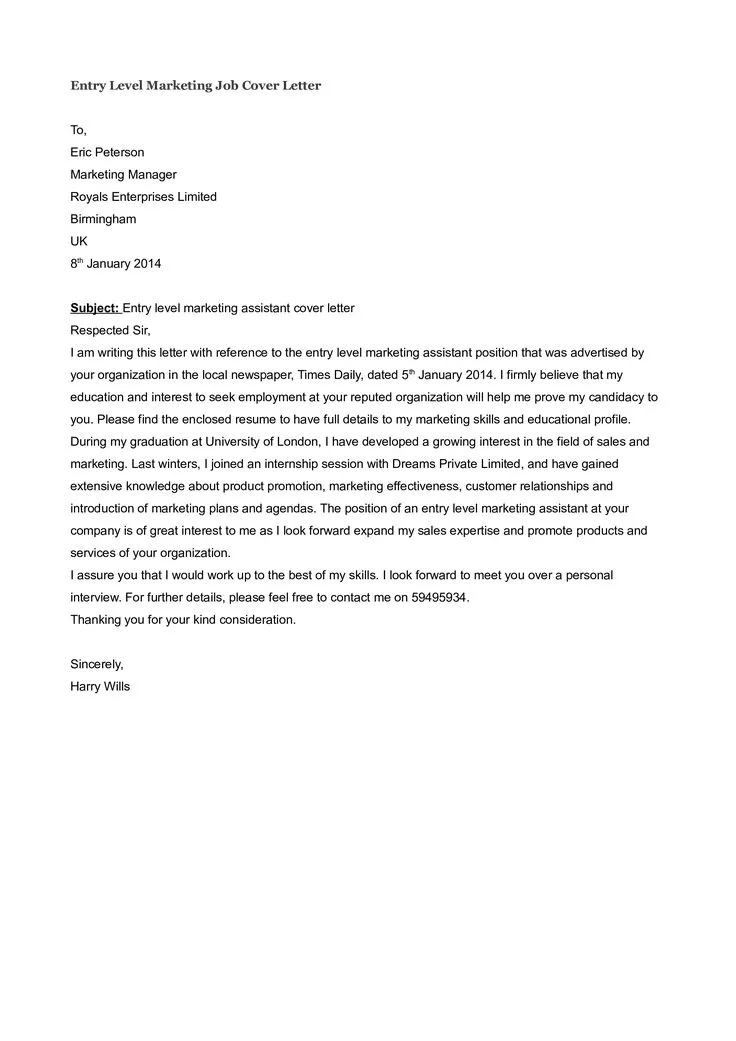
Customize your cover letter for each job application. Do not use a generic cover letter. Review the job description carefully, identifying the keywords and skills the employer is seeking. Highlight the relevant skills and experience that align with the job requirements. Adjust the language, examples, and tone to match the company’s culture and values. Demonstrate that you have taken the time to understand the specific needs of the role. Tailoring shows that you are truly interested in the opportunity. Make sure that you’ve addressed the company’s particular needs.
Researching the Company and the Role
Before writing your cover letter, conduct thorough research on the company and the specific role. Visit the company’s website, read their “About Us” section, and explore their social media channels. Identify the company’s mission, values, products, services, and target audience. Understand the role’s responsibilities, required skills, and the team you would be working with. Show you have a clear understanding of what the company does and what the role entails. This research will enable you to tailor your cover letter effectively and demonstrate your genuine interest. Tailor your experiences in line with the organization’s key initiatives.
Using Keywords from the Job Description
Carefully review the job description and identify the keywords. Incorporate these keywords naturally throughout your cover letter. Use the same language that the employer uses to describe the required skills and qualifications. This helps your cover letter get noticed by Applicant Tracking Systems (ATS). When you use the right keywords, your application has a greater chance of reaching a human reviewer. Be careful not to overstuff the keywords, and ensure the letter is still easy to read and natural sounding. It shows that you are a suitable fit for the role.
Structuring Your Cover Letter for Readability
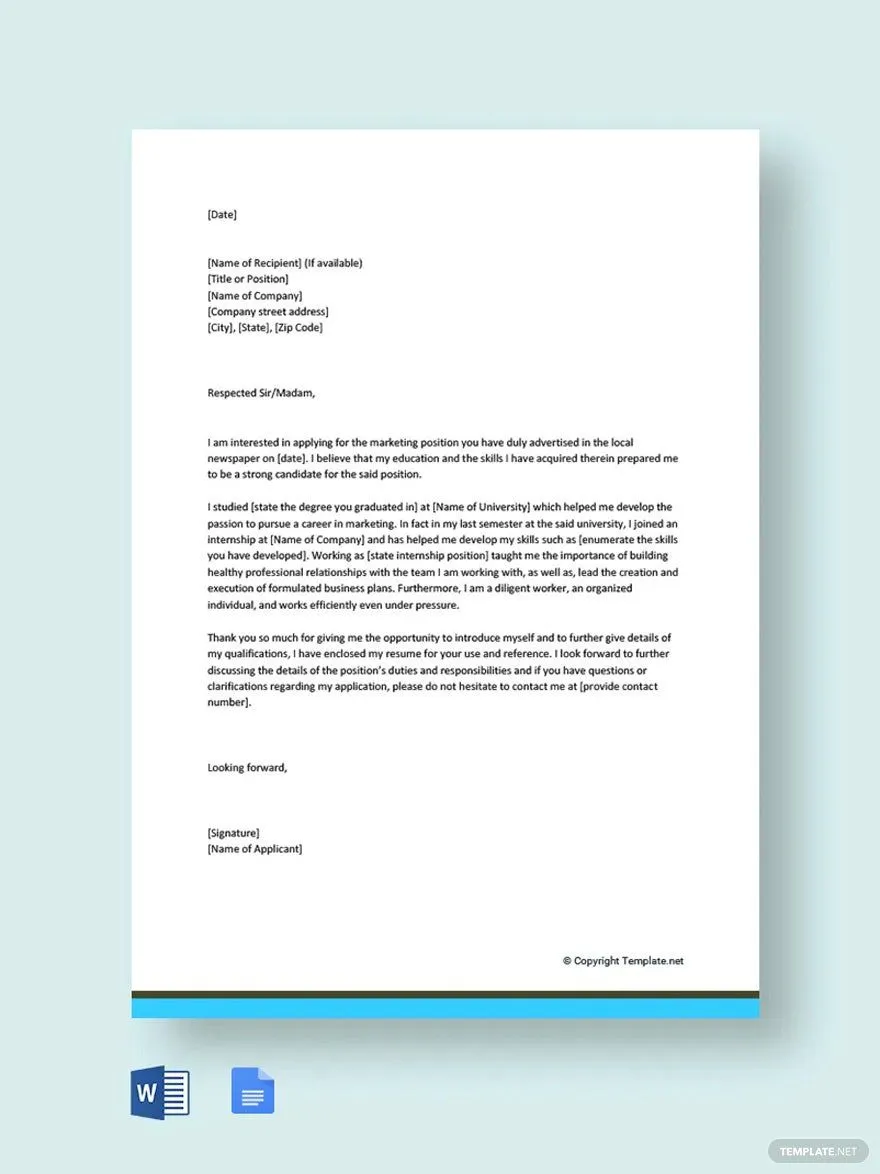
Use a clear and concise structure. Break your cover letter into logical paragraphs with clear headings. Use short sentences and paragraphs to improve readability. Use a professional font and font size (e.g., Times New Roman, Arial, 11 or 12 points). Use bullet points or numbered lists to highlight your skills and accomplishments. Keep the overall length to one page. Ensure there is adequate white space between paragraphs. Use a strong and confident tone to make your cover letter even more appealing. Make it easy for the hiring manager to scan and understand your qualifications at a glance.
Formatting Your Cover Letter
Choose a professional-looking format. Use a standard business letter format. Use left alignment and avoid centering text. Ensure consistent formatting throughout the document. Use bolding or italics sparingly, and only to emphasize key information. Save your cover letter as a PDF file to preserve the formatting. This ensures that the layout will appear the same no matter what computer or software the hiring manager uses. Review the format on different devices to check it is still well presented. The correct format will present you in a professional and organized manner. (See Image: cover-letter-formatting.webp)
Proofreading and Editing Your Cover Letter
Proofread your cover letter meticulously for any errors in grammar, spelling, and punctuation. Check the letter for clarity and conciseness. Read the letter aloud to identify any awkward phrasing or unclear sentences. Ask a friend, family member, or career advisor to review your cover letter for feedback. Ensure that your cover letter is error-free. A well-proofread cover letter demonstrates your attention to detail and professionalism. It also shows that you care about making a good impression on the hiring manager. Review the letter several times to catch errors. Double check all the details.
Best Practices and Tips for Entry-Level Marketing Cover Letters
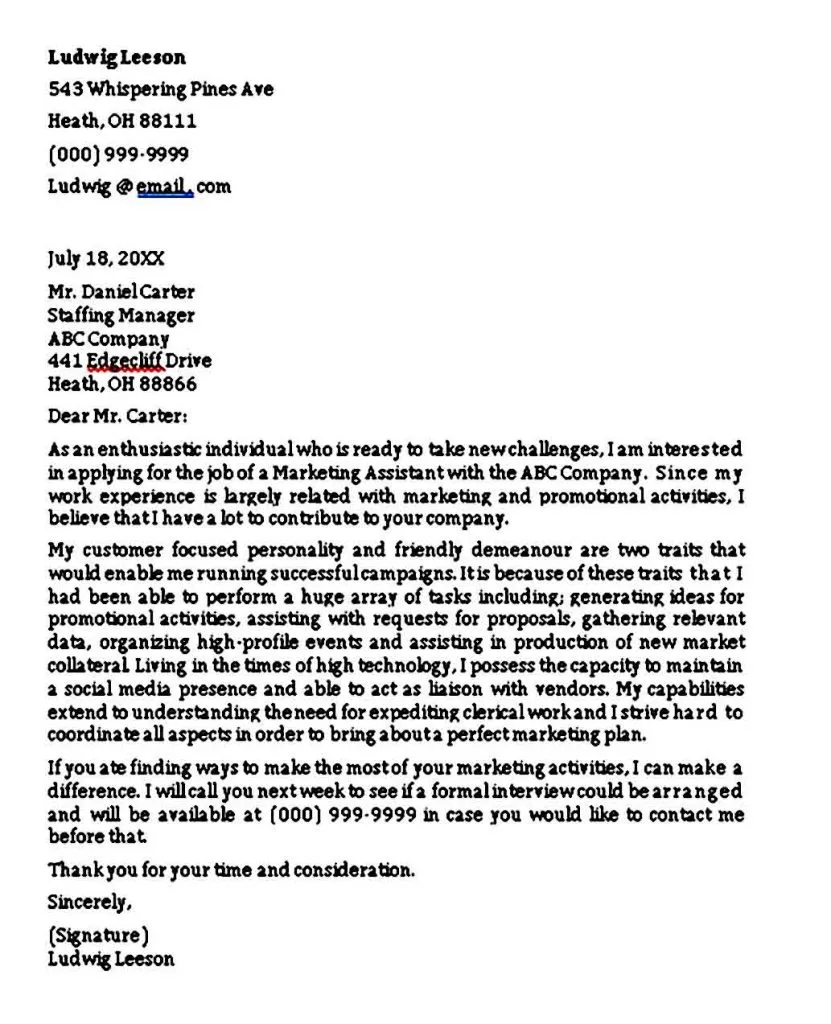
Use a professional email address. Keep your cover letter concise and to the point. Tailor your cover letter to each specific job. Highlight transferable skills, even if your experience is not directly marketing-related. Show enthusiasm for the role and the company. Proofread carefully for any errors. Include a call to action, such as expressing your interest in an interview. Follow up if you have not heard back within a reasonable timeframe. Consider using a cover letter template. Be authentic and let your personality shine through. These are key factors in creating a great cover letter for entry-level marketing roles.
Examples of Strong Action Verbs to Use
Use strong action verbs to describe your accomplishments and skills. This will make your cover letter more impactful. Examples include: Created, Developed, Managed, Implemented, Increased, Reduced, Improved, Led, Collaborated, Analyzed, Designed, Launched, Presented, and Strategized. These words show that you are proactive and that you can deliver results. Using action verbs helps your reader to visualize your actions. Use a variety of action verbs to keep your writing interesting and dynamic. Be specific about what you achieved and how you did it. (See Image: action-verbs-marketing.webp)
Common Mistakes to Avoid
Avoid using generic cover letters. Avoid typos and grammatical errors. Avoid using jargon. Avoid providing irrelevant information. Avoid being overly casual or informal. Avoid including negative comments about your previous employers. Avoid being vague or lacking specific examples. Avoid exceeding one page in length. Avoid not following the application instructions. These mistakes can make you seem careless or unprepared. Careful preparation will help you to avoid making these mistakes. (See Image: cover-letter-mistakes.webp)
Submitting Your Cover Letter
Follow the application instructions. Always submit your cover letter as a PDF file. Proofread the letter and resume before submitting them. Make sure the file is named correctly. Send a thank-you note after the interview. After you’ve submitted your cover letter, take the time to follow up. Make sure that all your documents are professional. Following up with the interviewer can show that you’re very keen to get the role.
